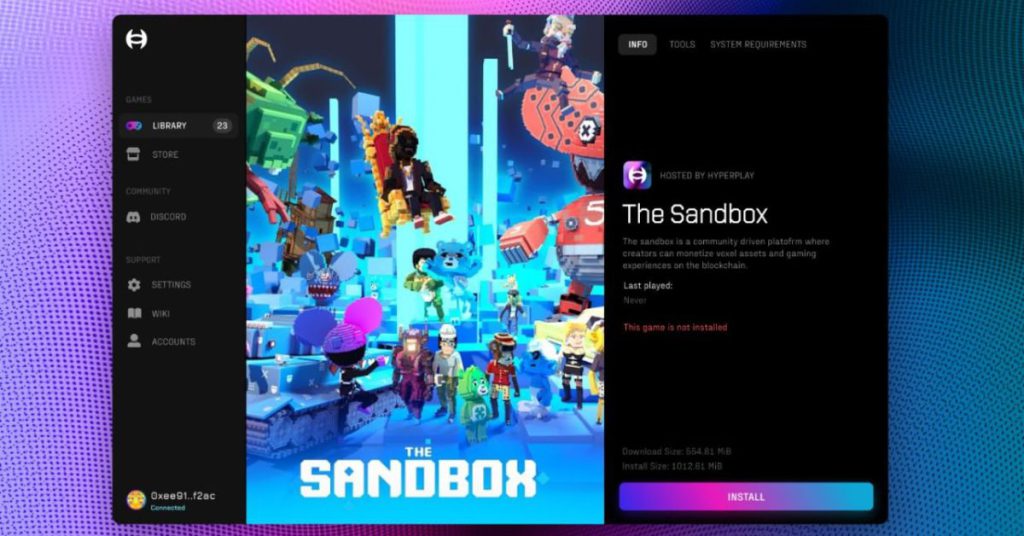[This is a sponsored article with HyperPlay.]
Game7, a decentralised autonomous organisation (DAO) that helps build and fund community game developers’ projects, has launched a Web3-native platform called HyperPlay.
HyperPlay is an open-source desktop app meant to be a game launcher, allowing Web3 gamers to transfer their assets (like tokens and NFTs) from game to game, making interoperability possible.
Tokenomics in gaming

According to HyperPlay’s team, the game launcher was built to ensure a better user experience for players and developers.
With the platform, players can connect their wallets (MetaMask or WalletConnect) containing their NFTs, tokens, and achievements to HyperPlay.
It’s beneficial as they can use the same assets (like hard-earned tokens, crypto, prizes, skins, and the like) to venture into other native desktop games that are installed and launched from HyperPlay.
For example, say you already hold some crypto in your MetaMask wallet, or have farmed some through achievements in other NFT-based games.
Having the interoperability to transfer using these existing funds allows you to conveniently make in-game purchases and transactions.
The game launcher appears to be acting as a public chain that’s used in tokenomics (token economics) to implement portability. This system provides the possibility of items being used across multiple games, without requiring permission each time.
As HyperPlay is also making its platform free to build on, other developers can expand on existing games. They can do so through a simple API to request transactions, signatures, or other requests possible with MetaMask.

Prior to HyperPlay’s existence, Web3 game developers had to sacrifice usability for function, with no viable way to add interoperability to native games, according to HyperPlay’s founder, JacobC.eth (Jacob).
He listed that developers had to pick their battles between the options of:
- Creating a browser game with in-game transactions, but it would have poor performance;
- Creating a native game with a separate website for players to transact;
- Embedding a single wallet into the game where assets are stuck inside the game.
“HyperPlay fixes all of this by presenting a Web3 wallet across every game the player launches,” Jacob stated.
Thus, using HyperPlay, developers can build the permissionless game economies they imagined.
They can also move assets between games, and follow their friends’ wallets to view each other’s tokens or NFTs.
HyperPlay already has games on board
The game launcher currently supports games from the Epic Games Store and GOG, ensuring playability for any game released through these platforms that have been sideloaded into HyperPlay.
HyperPlay has also received support for its mission from the Singaporean game finance (GameFi) platform Yeeha Games (backed by crypto exchange, Bybit). The company is a key strategic partner, integrating its expanding game library with HyperPlay. Jacob added that a Malaysian-made game that has been an early supporter of HyperPlay is Star Symphony. It’s a rhythmic game built on blockchain that can be fun and casual, or highly competitive and addictive.

When asked about what Jacob wants HyperPlay to achieve in the Malaysian market, he said that he hopes it can empower millions of gamers in discovering the decentralised web.
He also intends for players to use HyperPlay to build new communities, ultimately creating a larger community-owned internet economy.
All in all, it can be said that HyperPlay intends to prove that Web3 gaming can comprise more than just secondary markets or yield farms.
Featured Image Credit: HyperPlay’s official Twitter account











